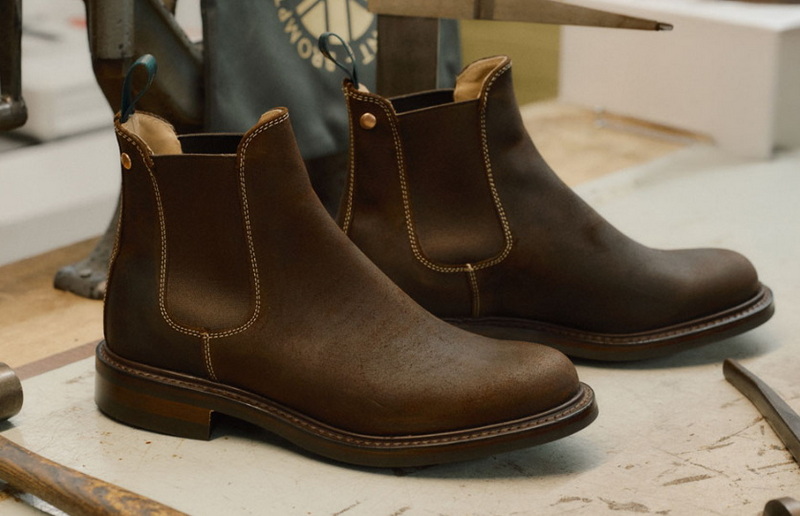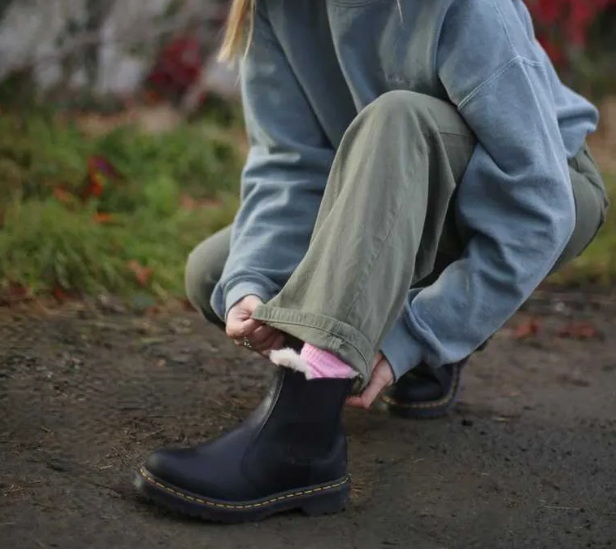Content Menu
● Understanding Chelsea Boots
>> History of Chelsea Boots
● 1. Regular Cleaning is Key
>> For Leather Boots:
>> For Suede Boots:
● 2. Conditioning and Protection
>> Leather Conditioning:
>> Suede Protection:
● 3. Proper Storage Techniques
● 4. Polishing Leather Chelsea Boots
● 5. Dealing with Specific Issues
>> Salt Stains:
>> Creasing:
● 6. Seasonal Care Tips
● 7. Daily Maintenance Practices
● 8. Professional Care Options
● 9. Common Mistakes When Caring for Chelsea Boots
● 10. How to Store Your Chelsea Boots Correctly
● 11. Understanding Different Materials
>> Leather vs. Suede:
>> Synthetic Materials:
● 12. The Importance of Regular Inspections
● Conclusion
● FAQ
>> 1. How often should I clean my Chelsea boots?
>> 2. Can I use regular soap on my leather Chelsea boots?
>> 3. How do I remove scuff marks from suede?
>> 4. Is it necessary to use shoe trees?
>> 5. How can I protect my Chelsea boots from water damage?
Chelsea boots are a timeless footwear choice that combines style and functionality. However, to keep them looking their best, regular maintenance is essential. This guide will provide you with comprehensive tips on how to care for your Chelsea boots, ensuring they remain a staple in your wardrobe for years to come.

Understanding Chelsea Boots
Chelsea boots are characterized by their ankle-high design, elastic side panels, and a loop or tab at the back for easy wear. They can be made from various materials, including leather and suede, each requiring specific care techniques.
History of Chelsea Boots
Originating in the Victorian era, Chelsea boots were initially designed for horse riding. Their sleek silhouette and practical design quickly made them popular among both men and women. Over the decades, they have evolved into a fashion staple, embraced by various subcultures and style movements—from the rock 'n' roll era to contemporary fashion.
1. Regular Cleaning is Key
Cleaning your Chelsea boots regularly is crucial for maintaining their appearance and extending their lifespan.
For Leather Boots:
- Remove Loose Dirt: Use a soft brush or cloth to remove any surface dirt.
- Clean the Surface: Mix mild soap with water or use a leather cleaner. Apply it gently in circular motions and wipe off with a damp cloth.
- Dry Naturally: Avoid direct heat; let them air dry away from sunlight.
For Suede Boots:
- Brush Away Dirt: Use a suede brush to gently remove dirt, following the direction of the fibers.
- Stain Removal: For stubborn stains, use a suede eraser or a specialized suede cleaner. Avoid using water directly on suede as it can cause discoloration.
- Air Dry: After cleaning, let the boots dry naturally without heat sources.
2. Conditioning and Protection
Proper conditioning keeps leather supple and prevents cracking, while protection helps repel water and stains.
Leather Conditioning:
- Apply Conditioner: After cleaning, apply a leather conditioner with a soft cloth in circular motions. Allow it to absorb for 10-15 minutes before buffing with a clean cloth.
- Frequency of Conditioning: It's recommended to condition your leather boots every 3-6 months, depending on usage and environmental conditions.
Suede Protection:
- Use Protector Spray: Apply a suede protector spray to create a barrier against water and stains. This should be done before wearing new suede boots and reapplied regularly.
3. Proper Storage Techniques
How you store your Chelsea boots significantly affects their longevity.
- Use Shoe Trees: For leather boots, shoe trees help maintain shape and absorb moisture after wear.
- Avoid Heat and Light: Store your boots in a cool, dry place away from direct sunlight to prevent drying out or fading.
- Dust Bags for Suede: Consider using dust bags for suede boots to protect them from dust and light exposure.
4. Polishing Leather Chelsea Boots
Polishing not only enhances the appearance but also adds an extra layer of protection against elements.
- Choose the Right Polish: Select a polish that matches your boot color or use neutral polish for versatility.
- Apply Evenly: Use a soft cloth or applicator brush to apply polish in circular motions. Let it sit for a few minutes before buffing with a clean cloth for shine.

5. Dealing with Specific Issues
Salt Stains:
If your Chelsea boots encounter snow or rain:
- Mix two parts vinegar with one part water.
- Use this solution to gently scrub the stained area with a clean cloth, then allow to air dry.
Creasing:
To prevent creasing in leather:
- Regularly condition your boots and store them properly using shoe trees.
6. Seasonal Care Tips
During different seasons, specific care is essential:
- Winter: Use waterproofing sprays on both leather and suede before exposure to snow or rain.
- Summer: Keep your boots cool and dry; avoid wearing them in extreme heat which can damage materials.
7. Daily Maintenance Practices
Daily maintenance can significantly enhance the longevity of your Chelsea boots:
- After each wear, wipe down your boots with a clean cloth to remove dust and dirt that may have accumulated during the day.
- Pay attention to the soles; dirt can accumulate there too, so wipe them down as well to prevent buildup that could lead to deterioration over time.
8. Professional Care Options
Sometimes, your Chelsea boots may require professional cleaning or repairs:
- If you encounter severe stains that you cannot remove at home or if your boots need resoling due to wear, consider taking them to a professional cobbler who specializes in leather care. They can provide services that ensure your boots are restored properly without damaging them further.
9. Common Mistakes When Caring for Chelsea Boots
Understanding common mistakes can help you avoid damaging your Chelsea boots:
- Using Generic Products: Avoid using strong soaps or abrasive cleaners not designed for leather or suede as they can harm the material's finish.
- Quick Drying Methods: Resist the urge to speed up drying by using direct heat sources like radiators or hair dryers; this can lead to cracks in the leather or deformities in shape.
10. How to Store Your Chelsea Boots Correctly
Proper storage is essential for maintaining the shape and quality of your Chelsea boots:
- Stuff your boots with newspaper or use shoe supports to help maintain their original shape and prevent wrinkles on both leather and suede materials.
- Store them in a cool, dry place away from dampness which can compromise the material quality over time.
- Give them space; avoid piling them up or storing them too tightly together as this can lead to creasing and loss of shape.
11. Understanding Different Materials
Different materials require different care methods:
Leather vs. Suede:
Leather is more durable but requires regular conditioning, while suede is softer but more susceptible to stains and water damage. Understanding these differences will help you choose appropriate cleaning products and methods for each type of boot you own.
Synthetic Materials:
Some Chelsea boots are made from synthetic materials which may require less maintenance than natural leathers but still need regular cleaning. Always check labels for specific care instructions tailored to synthetic materials.
12. The Importance of Regular Inspections
Regularly inspecting your Chelsea boots can help identify issues before they become significant problems:
- Look for signs of wear such as loose stitching, worn-out soles, or cracks in the material.
- Addressing these issues early can save you money on repairs later on and extend the life of your footwear significantly.
Conclusion
Maintaining your Chelsea boots is an investment in their longevity and appearance. By following these care tips—regular cleaning, conditioning, proper storage, polishing, daily maintenance practices, addressing specific issues, avoiding common mistakes, understanding different materials, utilizing professional care options when necessary, and conducting regular inspections—you can ensure that your Chelsea boots remain stylish and functional for years to come. Remember that taking care of your footwear not only preserves its look but also enhances its comfort and durability.

FAQ
1. How often should I clean my Chelsea boots?
You should clean your Chelsea boots after every few wears or whenever they appear dirty. Regular maintenance prevents dirt buildup and keeps them looking fresh.
2. Can I use regular soap on my leather Chelsea boots?
Yes, you can use mild soap mixed with water as long as it's not harsh. Specialized leather cleaners are recommended for best results.
3. How do I remove scuff marks from suede?
Use a suede eraser or brush gently over the scuff mark in the direction of the fibers to lift the stain without damaging the material.
4. Is it necessary to use shoe trees?
Yes, shoe trees help maintain the shape of your boots and absorb moisture after wear, prolonging their lifespan significantly.
5. How can I protect my Chelsea boots from water damage?
Apply a waterproofing spray designed for leather or suede before wearing them in wet conditions, and reapply regularly for ongoing protection.

















